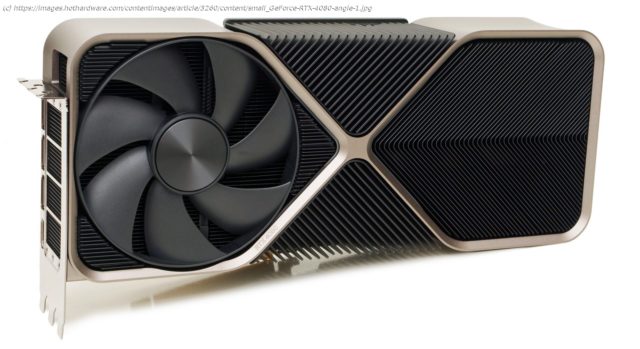The NVIDIA GeForce RTX 4080 is based on the scaled down, but still powerful AD103 Ada Lovelace GPU.
A couple of weeks back, we got to you show a pair of GeForce RTX 4090 cards, NVIDIA’s own Founders Edition and the MSI Suprim Liquid X . As expected, both cards offered monstrous performance that clearly outmatched any previous-generation card, not to mention and array of new technologies. The GeForce RTX 4090, however, also commands a price premium commensurate with its high performance levels and bleeding-edge feature set. As such, cards like the GeForce RTX 4080, which sit one-notch below the flagship RTX 4090, are typically more popular with enthusiasts. With this generation, however, NVIDIA has taken a somewhat different approach with its gaming GPU line-up. Unlike the GeForce RTX 3090 and RTX 3080, which were both based on the GA102 GPU, the new GeForce RTX 4090 and RTX 4080 are based on completely different slices of silicon. That has all sorts of implications in terms of performance, power, and pricing, as we’ll explore a little later.For today’s launch of the GeForce RTX 4080, we once again have a pair of cards to show you, and the dynamic duo also come by way of NVIDIA and MSI . The NVIDIA GeForce RTX 4080 Founders Edition represents NVIDIA’s vision for the AD103 GPU at the heart of the card and MSI embellishes on NVIDIA’s reference design and goes bigger in virtually every way.Before we get to showing off the cards though, he’s a quick spec breakdown comparing the GeForce RTX 4080 to its RTX 30-series counterpart, the GeForce RTX 3080 Ti 12GB followed by some AD103 GPU details…As we mentioned earlier, the GeForce RTX 4080 and RTX 4090 are not based on the same GPU. While they are both based on the Ada Lovelace GPU architecture, the current flagship RTX 4090 is built around the larger AD102 GPU, whereas the new GeForce RTX 4080 uses the smaller (but still large) AD103. So, unlike some previous-gen cards, where the enthusiast model uses a cut-down version of NVIDIA’s flagship GPU, this time around, the 40-series xx80 and xx90 models use two different chips altogether.In terms of feature support, the AD103 is identical to the AD102. They both offer all of the features inherent to the Ada Lovelace architecture, in addition to other NVIDIA technologies like DLSS 3, NVIDIA Reflex latency reduction, NVIDIA Broadcast, Ansel, G-SYNC, Omniverse, optional Studio drivers, and GeForce Experience, to name just a few. For a more detailed explanation of Ada Lovelace , we suggest reading the linked article and checking out our launch coverage of the GeForce RTX 4090 while you’re at it.Versus the bigger AD102 used on the RTX 4090, the AD103 on the RTX 4080 is scaled down in a few key ways. Whereas the AD102 on the RTX 4090 has 11 GPCs, 64 TPCs, 16,384 CUDA cores, 512 Tensor cores, and 128 RT cores, with a 384-bit memory interface, the smaller AD103 has 7 GPCs, 38 TPCs, 9,728 CUDA cores, 304 Tensor cores, and 76 RT cores, with a 256-bit memory interface. As such, the AD103’s transistor count is also much lower—45.






